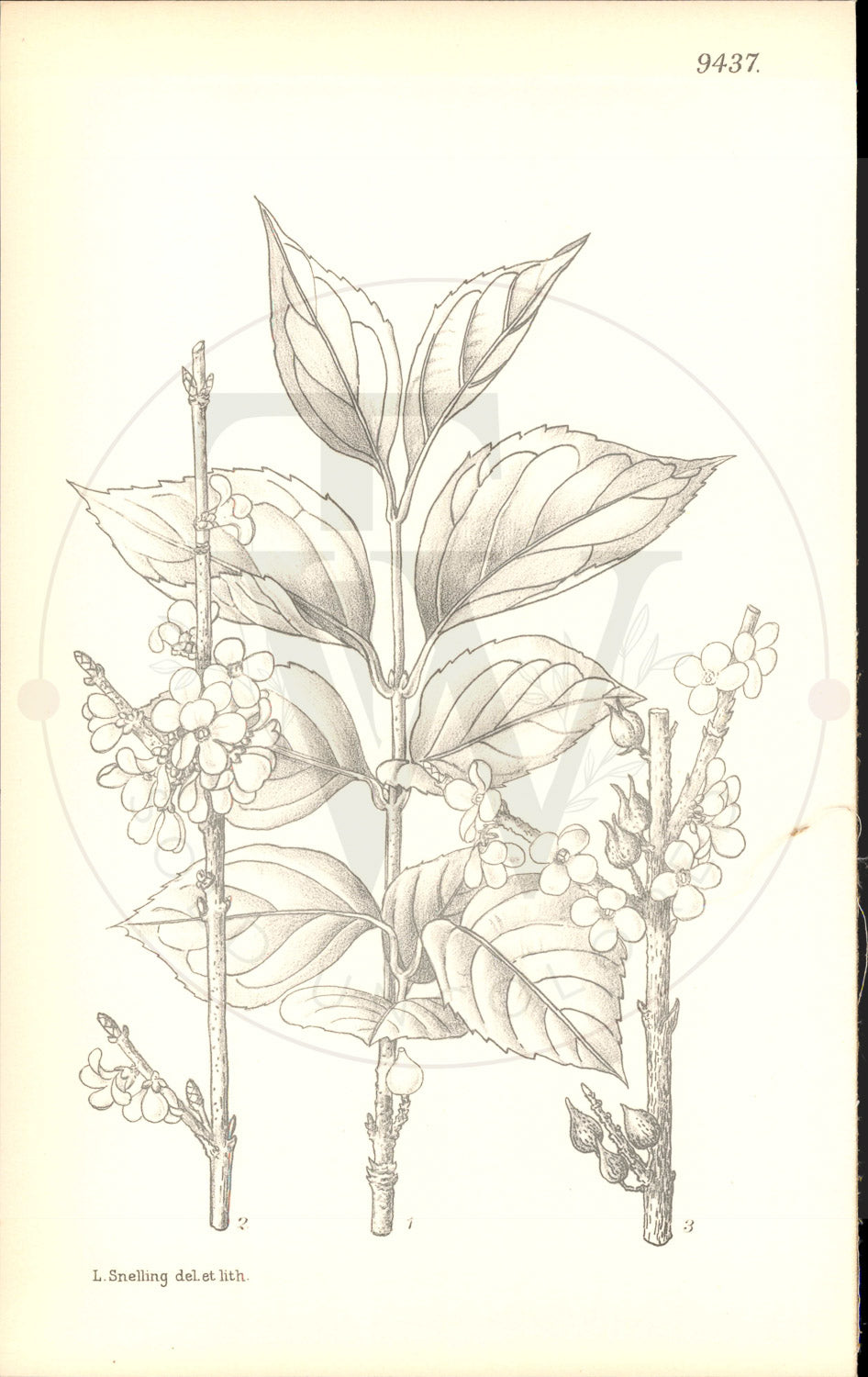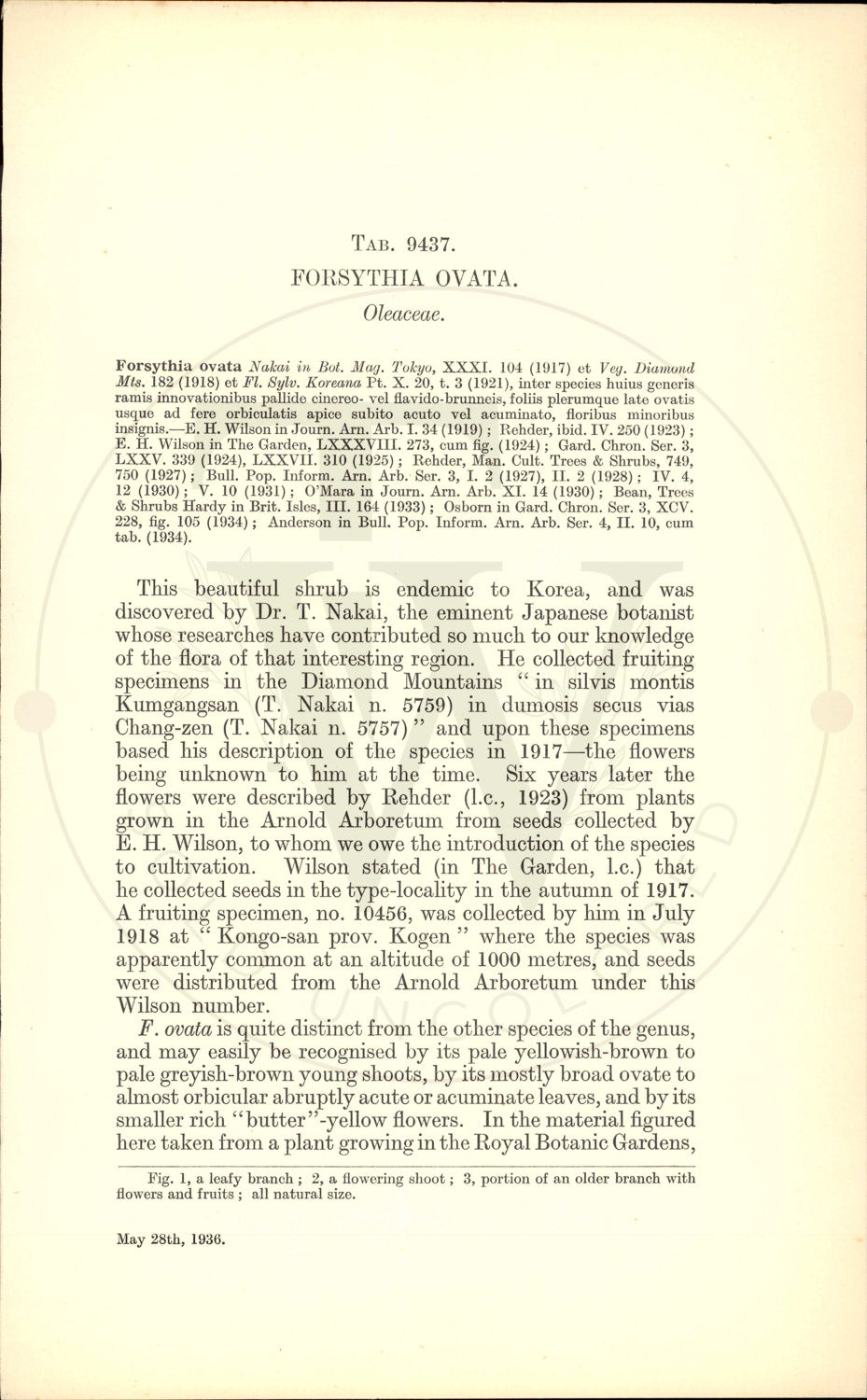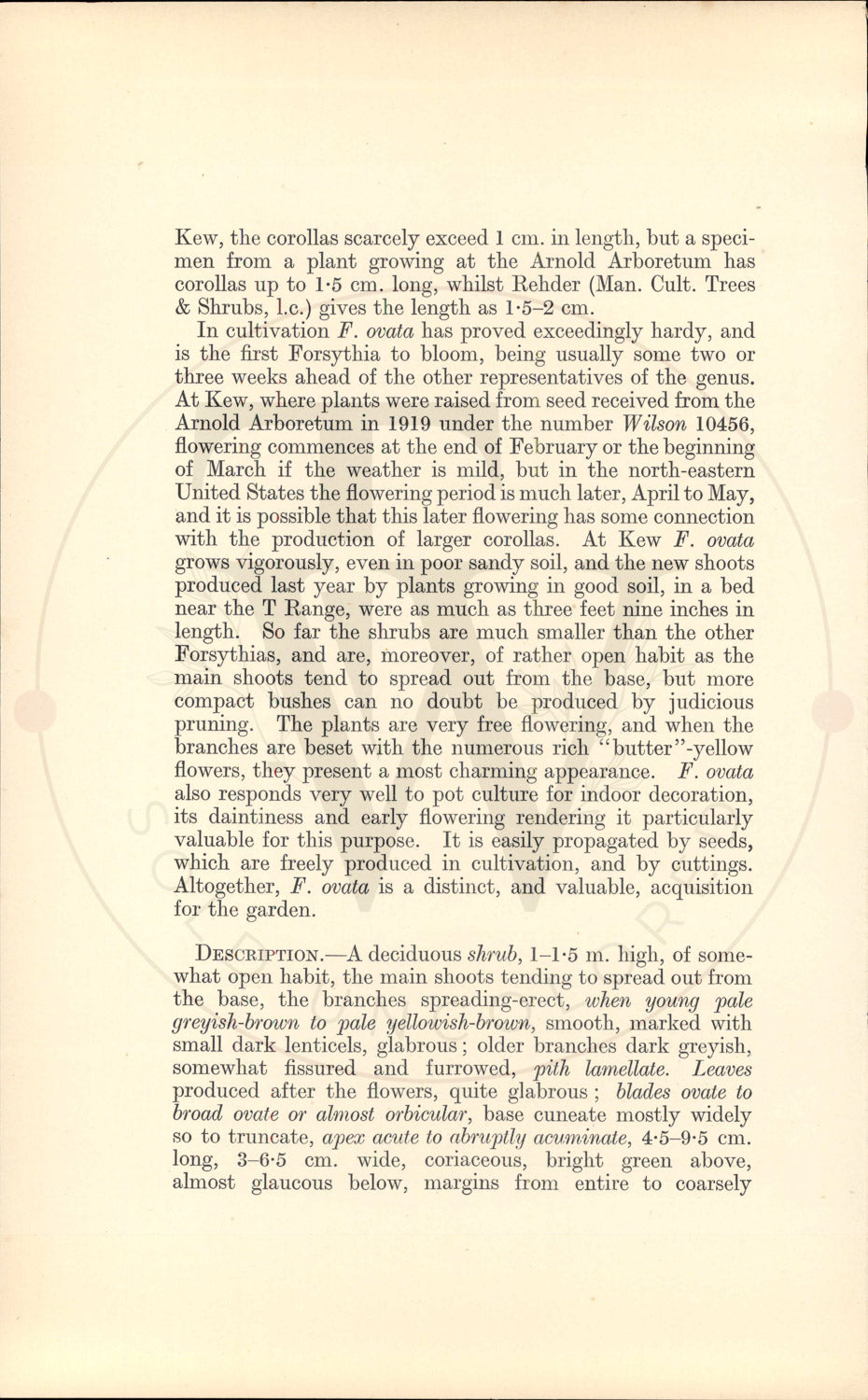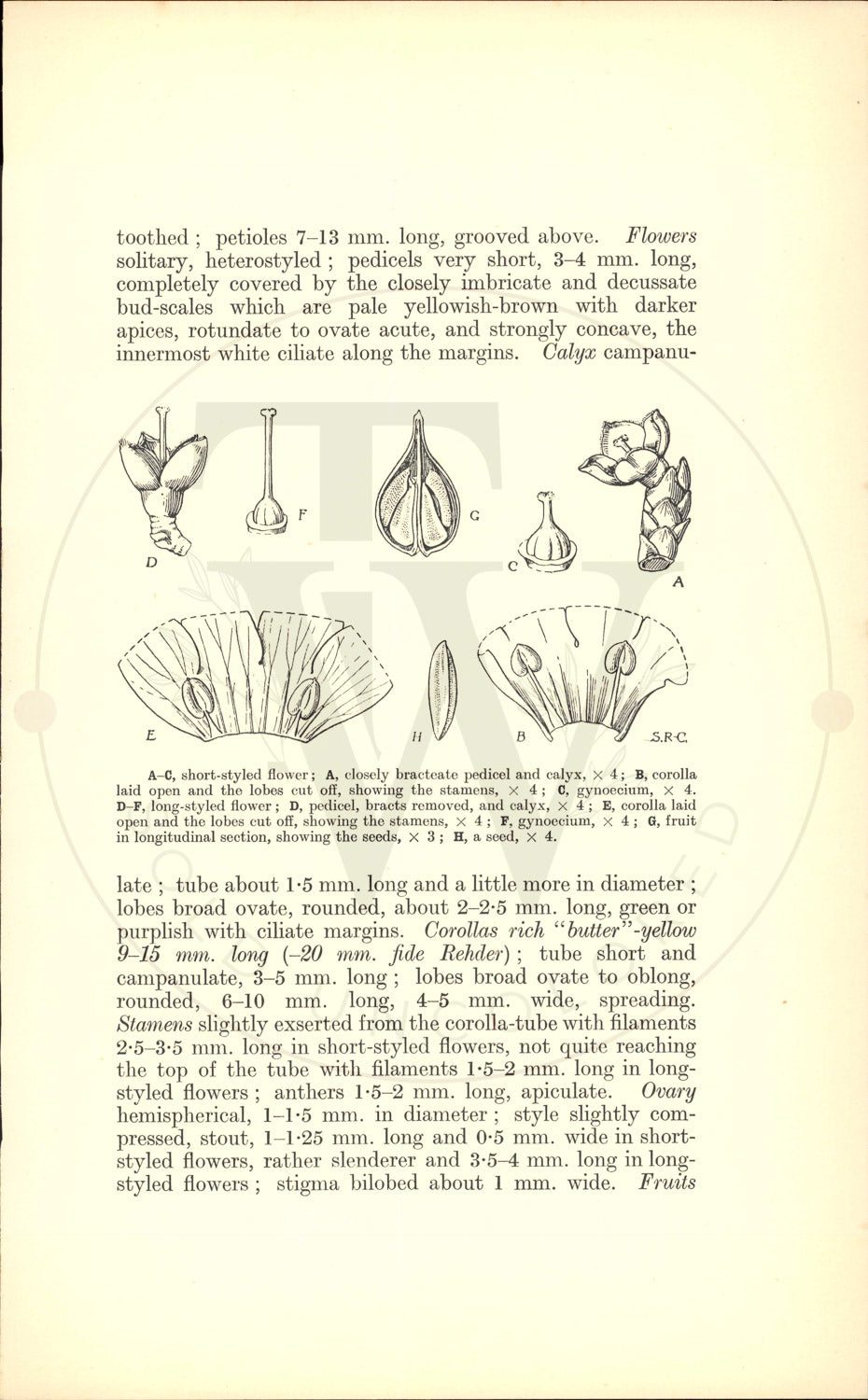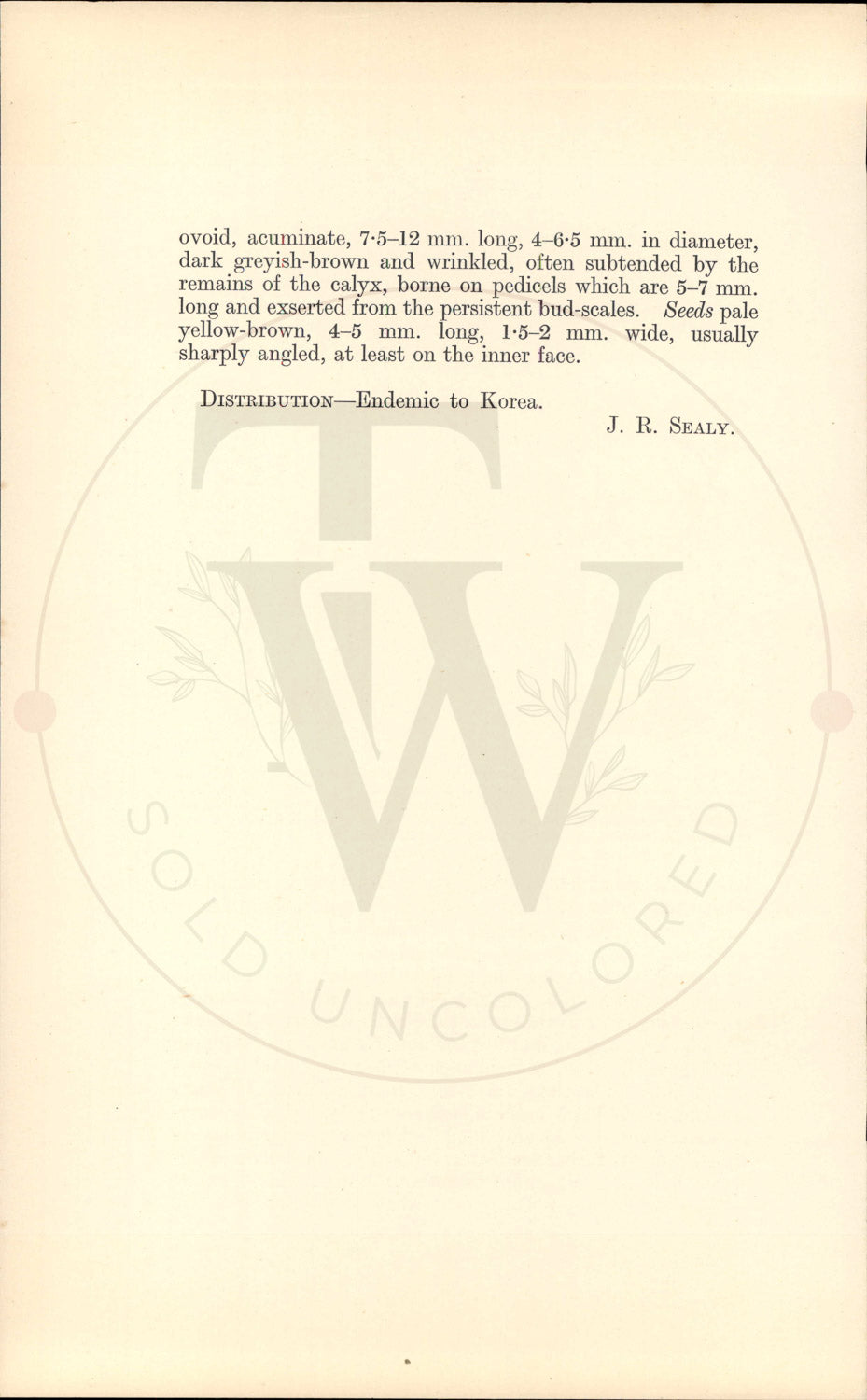Curtis Botanical Magazine
Plate 9437 - Forsythia ovata
Plate 9437 - Forsythia ovata
Couldn't load pickup availability
Curtis's Botanical Magazine - Plate 9437
Forsythia ovata
Native Region: Japan • Publication Date: January 1st, 1934
Distribution: -Endemic to Korea • Tab Author: J. R. SEALY
Botanical Description
This beautiful shrub is endemic to Korea, and was discovered by Dr. T. Nakai, the eminent Japanese botanist whose researches have contributed so much to our knowledge of the flora of that interesting region. He collected fruiting specimens in the Diamond Mountains "in silvis montis Kumgangsan (T. Nakai n. 5759) in dumosis secus vias Chang-zen (T. Nakai n. 5757)" and upon these specimens based his description of the species in 1917-the flowers being unknown to him at the time. Six years later the flowers were described by Rehder (l.c., 1923) from plants grown in the Arnold Arboretum from seeds collected by E. H. Wilson, to whom we owe the introduction of the species to cultivation. Wilson stated (in The Garden, 1.c.) that he collected seeds in the type-locality in the autumn of 1917. A fruiting specimen, no. 10456, was collected by him in July 1918 at Kongo-san prov. Kogen" where the species was apparently common at an altitude of 1000 metres, and seeds were distributed from the Arnold Arboretum under this Wilson number. F. ovata is quite distinct from the other species of the genus, and may easily be recognised by its pale yellowish-brown to pale greyish-brown young shoots, by its mostly broad ovate to almost orbicular abruptly acute or acuminate leaves, and by its smaller rich "butter"-yellow flowers. In the material figured here taken from a plant growing in the Royal Botanic Gardens,.
About This Print
Original black and white uncolored botanical print from Curtis's Botanical Magazine (established 1787). This 9000s series print is from unissued publisher stock, never hand-colored, representing the authentic plate as it appeared in the magazine. Edited by Sir Arthur William Hill for The Royal Horticultural Society, London.
Share
